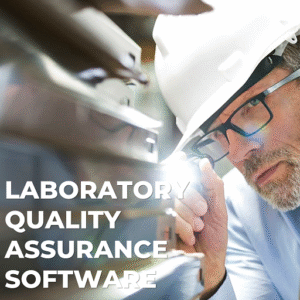Future-Proofing Your Lab with AI-Driven Quality Control Software

Introduction
As laboratories face increasing demands for speed, accuracy, and compliance, traditional quality control methods are proving insufficient. To stay competitive and compliant, labs must embrace digital transformation—and AI-driven quality control software is at the forefront of this shift. By incorporating automation, predictive analytics, and real-time decision-making, these systems not only improve current operations but also future-proof your lab against evolving challenges in the life sciences, pharmaceuticals, chemicals, and manufacturing sectors.
Why Traditional QC Systems Are Falling Behind
Conventional quality control systems depend heavily on manual tasks, paper-based documentation, and human judgment. This leads to:
-
Slow data analysis and reporting
-
Increased risk of human error
-
Delayed responses to quality issues
-
Poor scalability across multiple lab sites
In contrast, AI-powered quality control software enables continuous, intelligent, and autonomous monitoring—making your lab proactive instead of reactive.
Key Advantages of AI-Driven QC Software
1. Real-Time Data Processing
AI systems analyze vast amounts of quality control data in real time. Whether it’s from instruments, LIMS, or IoT sensors, the software:
-
Flags anomalies instantly
-
Identifies potential defects before final testing
-
Reduces batch rejection rates
This translates into faster decision-making and increased throughput.
2. Predictive Quality Analytics
With machine learning algorithms, AI-driven QC software can:
-
Predict quality trends and deviations
-
Suggest corrective actions
-
Minimize future risks
By leveraging historical and real-time data, the system learns continuously, helping teams prevent issues before they arise.
3. Automated Documentation and Compliance
Regulatory compliance requires meticulous data capture, storage, and retrieval. AI-enhanced systems automate:
-
Audit trail generation
-
Digital signatures and version control
-
Notifications for non-compliance
This reduces administrative burden while improving inspection readiness.
4. Adaptive Decision-Making
Unlike rule-based systems, AI adapts to changes in:
-
Material inputs
-
Environmental conditions
-
Instrument performance
It dynamically adjusts quality thresholds and triggers alerts—ensuring optimal quality without constant manual oversight.
Implementation Tips for Success
1. Start Small with Pilot Projects
Instead of overhauling the entire QC process, begin with high-impact areas such as microbial analysis, impurity profiling, or sample tracking.
2. Integrate with Existing Systems
Choose AI-driven solutions that connect seamlessly with your LIMS, ERP, and instrument data systems. Integration ensures smooth workflows and avoids data silos.
3. Upskill Your Team
Empower your lab personnel with training on AI tools and dashboards. Understanding how AI generates insights improves adoption and builds trust in the system.
4. Prioritize Data Quality
Clean, structured, and validated data fuels AI accuracy. Invest in data governance strategies to optimize long-term AI performance.
Use Cases Across Lab Environments
-
Pharmaceutical Labs: AI models ensure consistent tablet weight, coating uniformity, and chemical composition in drug manufacturing.
-
Chemical Analysis Labs: Predictive algorithms detect process drift in reaction outcomes.
-
Food & Beverage Labs: AI spots contamination patterns and monitors compliance with global safety standards.
-
Environmental Labs: AI systems optimize testing intervals for air and water samples by analyzing seasonal trends.
Looking Ahead
The future of laboratory quality control lies in agility, intelligence, and automation. AI-driven systems provide all three, helping labs evolve with increasing regulatory scrutiny and market demand. Labs that invest in such technology today will not only achieve greater accuracy and efficiency but also build resilience for the challenges of tomorrow.
Conclusion
In a world where innovation is constant and compliance is non-negotiable, AI-driven quality control software is no longer optional—it’s essential. By integrating real-time analytics, adaptive automation, and predictive insights, labs can improve quality, reduce costs, and enhance reliability. More importantly, they gain the tools to evolve continuously and confidently in an increasingly data-driven environment. Future-proofing your lab begins with this digital transformation.
QHSE SOFTWARE SOLUTION
Laboratory Quality Assurance Software
QC Plans of Laboratory Quality Assurance Software
Features of Laboratory Quality Assurance Software
Benefits of Laboratory Quality Assurance Software
Support for Laboratory Quality Assurance Software
FREE demo of Laboratory Quality Assurance Software
CONTACT
Akshar Management Consultant
+91-9909979870
